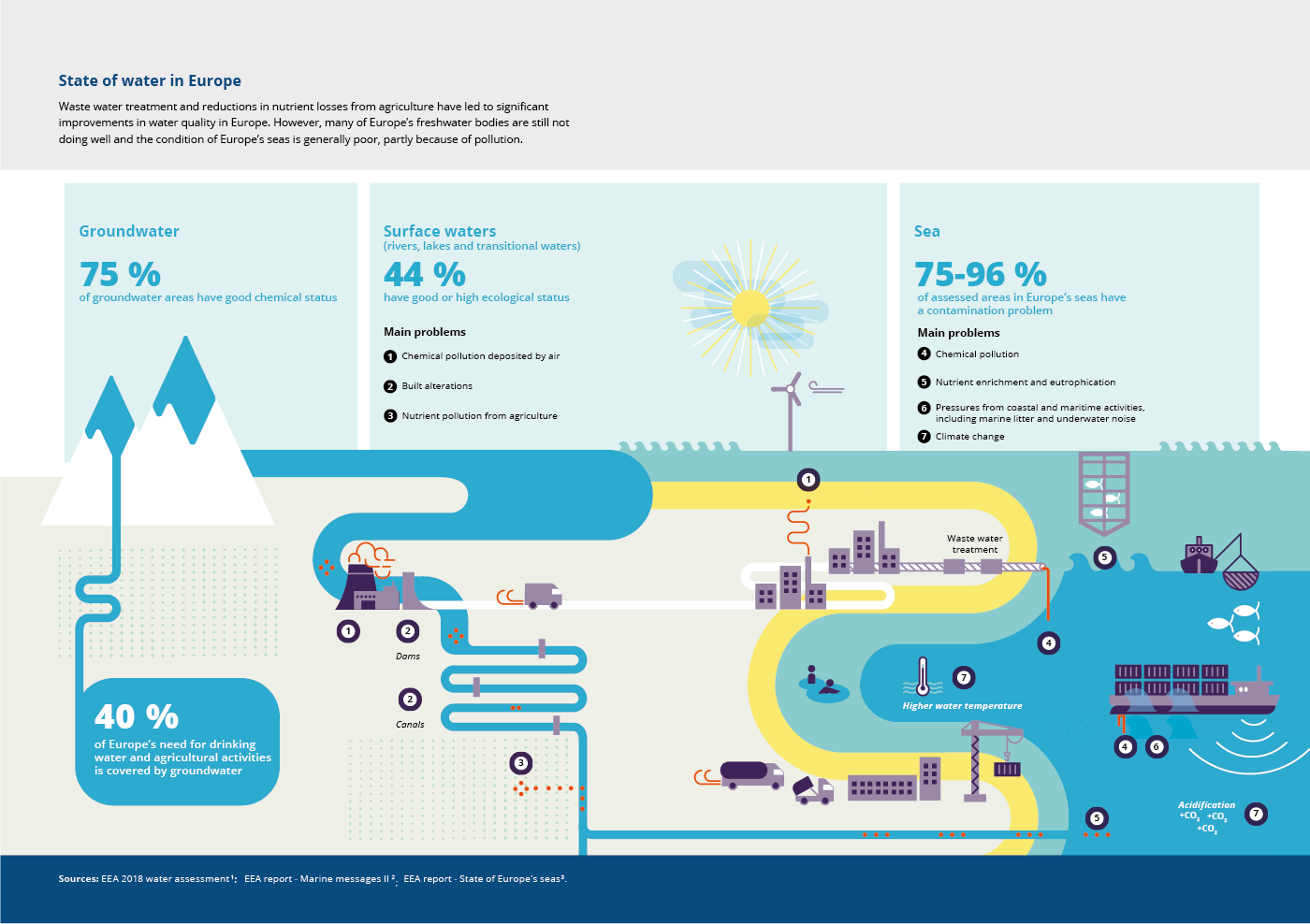Adoption of revised Drinking Water Directive 2020/2184
It’s been a long time coming, but the revised European Drinking Water Directive 2020/2184 was finally adopted on the 16th December 2020 and came into force on the 12th January 2021. EU member states will have 2 years to transpose the new standards into national legislation. We are now in the second half of 2021 so only 18 months to evaluate the implications of the directive and introduce improved treatment systems if required.
Water Services in Europe are managed in a variety of different ways depending on historical and political:
- Direct Public Management
- Delegated Public Management
- Delegated Private Management
- Direct Private Management
Direct Public Management was originally how the majority of Europe managed their water supplies but this has now changed to a combination of delegated management approaches. Full Direct Private Management currently only happens in England, Wales, and the Czech Republic.
How the water supplies are funded also impacts the final cost to the consumer with typical prices running from 1.5Eu/m3 in Italy up to as much as 9Eu/m Denmark.
Independent of who manages the supply in a particular country the quality of water needs to conform to the new tighter regulations by the end of 2022
Why Update the Directive?
Everyone has a basic right to fresh clean potable water. This was the driving force behind the successful European Citizens Initiative ‘Right2Water’ in 2012 and the subsequent review of the directive via the Regulatory Fitness and Performance (REFIT) evaluation of Directive 98/83/EC in 2016.
A proposal for recasting was published in 2016 and adopted by the European Parliament, Public Health and Food Safety (ENVI) in Sept 2018. The key objectives and the expected outcome are detailed below by the European Commission

There were four main areas identified in the REFIT evaluation as having scope for improvement were

Quality-based Parametric Values: Cartridge Filtration
The EU directive requires member states to monitor and regularly test water quality. The proposed new standard includes 18 new or revised parametric values for the microbiological, chemical, and indicator parameters.
Microbiological Parameters
The recommendations from the WHOs’ Drinking Water Parameter Cooperation Project (Sept 2017) have been used to inform the new limits in the directive. New parameters have been added to the list, namely Clostridium Perfringens spores, coliform bacteria and somatic coliphages.
While these values may seem onerous to some water providers the WHO guidelines state that it should easily be achievable with a properly designed and maintained system. We have recently worked with a number of UK Municipal Water providers to attain these revised turbidity levels without any issues on filtration efficiency or lifetime.
Of specific relevance to depth cartridge filters is the inclusion of Turbidity in this section. This has previously been included in the indicator parameters i.e. those which do not have a direct impact on health but can influence the quality of the water.
This change highlights the importance of low turbidity in ensuring the effective disinfection of water using technology such as UV or chlorination. WHO recommendations state ‘The important role of turbidity in controlling filtration performance and ensuring efficacy of disinfection should be made much clearer and also the requirement that turbidity should be as low as reasonably achievable’.
The previous indicator level of <1NTU was aimed at the water quality at consumer point of use i.e. the tap. This can be level is now deemed too high to guarantee trouble free disinfection at the water treatment facility. The revised values are shown in table1 and are intended to ensure continued efficacy of the disinfections systems being used.
| Parameter |
Parametric Value |
| Turbidity |
0.3NTU (95% of the time) and not >0.5NTU for 15 consecutive minutes |
| Frequency of Measurement |
≤10,000 m3 /day: daily
>10,000 m3 /day: on-line
|
How good is the quality of Europe's Drinking water?
It depends. One significant issue is one of chemical contamination. The infographic below published by the European Environment Agency from a study conducted in 2018 indicates the quality can vary considerably depending on the source. Ground water quality is generally better ( 75% deemed to be good) while only 44% of potable water sourced from surface water is considered of good quality.

While the removal of chemicals such as pesticides , phosphorous etc has to be dealt with using adsorption technologies the implementation of dead end cartridge filtration ( typical 1 -5 micron) can be a cost effective way of guaranteeing the microbial quality of the drinking water leaving the treatment works is assured.
The flexibility of cartridge systems means they are also ideally suited to short term quality issues caused by disruption of the ground source due to large infrastructure projects or environmental changes such as flooding or drought.
Navigate the Changes with Amazon Filters
Amazon Filters have decades of experience supporting the UK Municipal Water Industry providing water that exceeds the requirements of the new directive. If you need help navigating the changes, we would be pleased to assist in advising on the implementation of cartridge filtration.
References
- Directive (EU) 2020/2184 of the European Parliament and of the Council of 16 December 2020 on the quality of water intended for human consumption (recast)
- COM(2017) 753 final - Annexes 1 to 6
ANNEXES to the Proposal for a Directive of the European Parliament and of the Council on the quality of water intended for human consumption (recast)
- WHO Drinking Water Parameter Cooperation Project (11th Sept2017)
Support to the revision of Annex I Council Directive 98/83/EC on the Quality of Water Intended for Human Consumption (Drinking Water Directive)
- EPRS_BRI(2018)625179_EN Revision of drinking water directive



